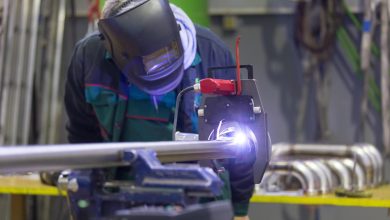Maintaining Perfect Temperatures: Jacketed Tanks and Kettles – A Guide for Optimal Performance

From brewing delicious craft beers to processing pharmaceuticals, various industries rely on precise temperature control during production. This is where jacketed tanks and jacketed kettles come into play. These versatile vessels feature a double-walled design, with an inner tank or kettle containing the processed material and a surrounding jacket through which a heating or cooling medium flows. This blog delves into the benefits of jacketed tanks and jacketed kettles and offers valuable insights for selecting the right option for your project.
Understanding Jacketed Tanks and Kettles:
Jacketed tanks and jacketed kettles share similar principles but cater to slightly different applications:
- Jacketed tanks: Typically larger in size, they are often used in various industrial processes like chemical processing, food and beverage production, and pharmaceutical manufacturing. They offer precise temperature control for a wide range of materials and offer greater flexibility in terms of volume and agitation options.
- Jacketed kettles: Often smaller than jacketed tanks, they are commonly used in food service and smaller-scale production settings for tasks like boiling, mixing, and processing smaller batches of materials. Their compact size makes them ideal for applications requiring frequent movement or limited space.
Benefits of Jacketed Tanks and Kettles:
- Precise Temperature Control: The jacketed design allows for precise control of the temperature within the inner vessel, ensuring consistent product quality and efficient process execution.
- Increased Efficiency: The efficient heat transfer between the jacket and the inner vessel minimises energy consumption and optimises overall process efficiency.
- Enhanced Product Quality: Precise temperature control safeguards product quality by preventing overheating or underheating, which can negatively impact properties like texture, flavour, or chemical composition.
- Versatility: Jacketed tanks and kettles find application in diverse industries due to their ability to handle a wide range of temperatures and processing needs.
Choosing the Right Jacketed Vessel:
Several factors come into play when selecting the right jacketed tank or jacketed kettle for your project:
- Application: Consider the specific process or application for which the vessel will be used, as the size and agitation requirements can vary.
- Volume: Determine the necessary volume capacity to accommodate your batch size and production needs.
- Material compatibility: Ensure the vessel material is compatible with the processed materials and the required temperature range.
- Heating and cooling requirements: Choose a vessel with the appropriate jacket design and features to meet your specific heating and cooling needs.
Additional Considerations:
- Budget: Jacketed tanks and kettles can vary significantly in cost depending on size, material, and features.
- Safety features: Ensure the chosen vessel incorporates necessary safety features like pressure relief valves and temperature controls.
- Manufacturer reputation: Opt for reputable manufacturers with a proven track record of providing high-quality and reliable jacketed vessels.
Conclusion:
Jacketed tanks and jacketed kettles offer a versatile and efficient solution for precise temperature control in various applications. By understanding their benefits, key differences, and selection factors, you can choose the ideal vessel to ensure optimal performance, consistent product quality, and increased efficiency in your projects.



